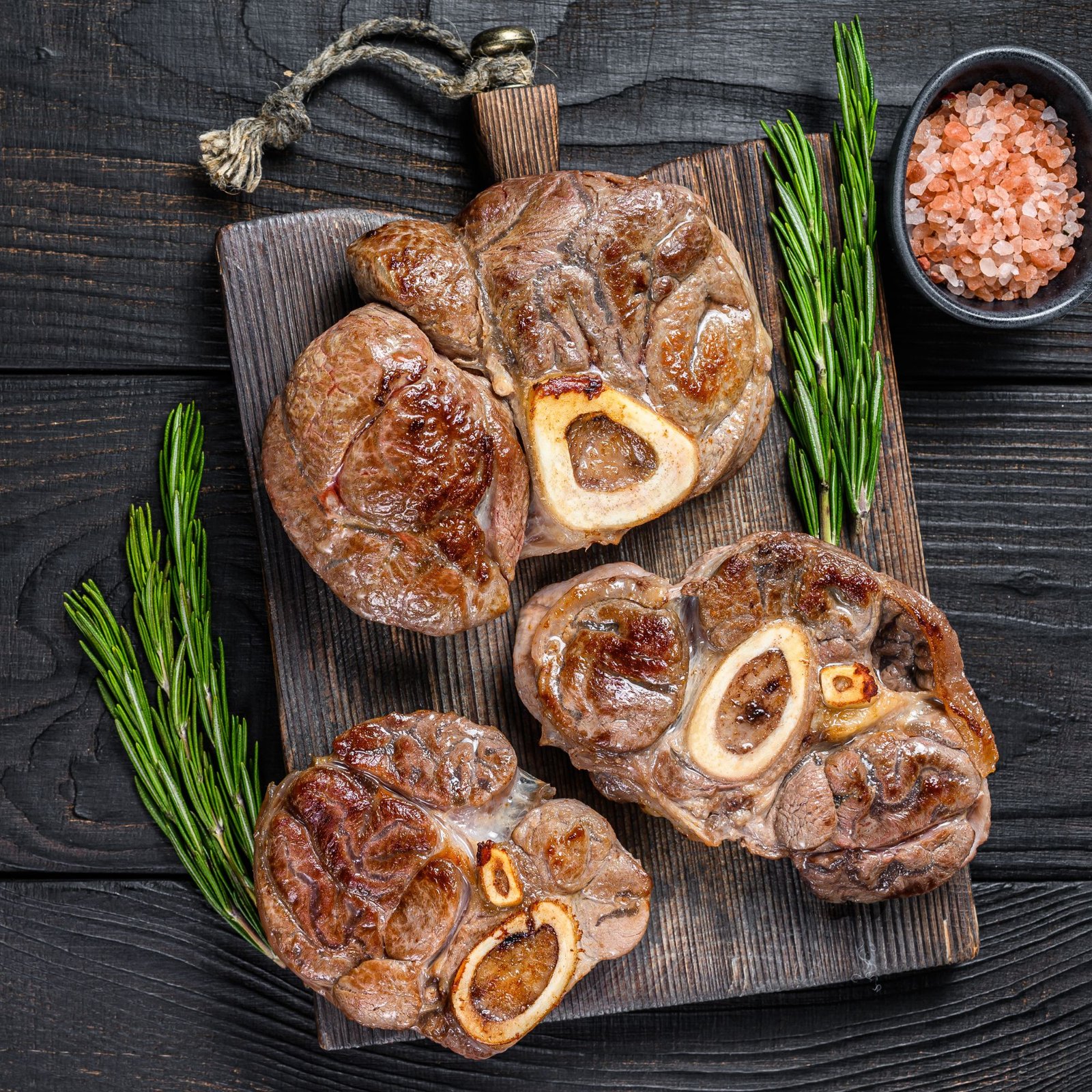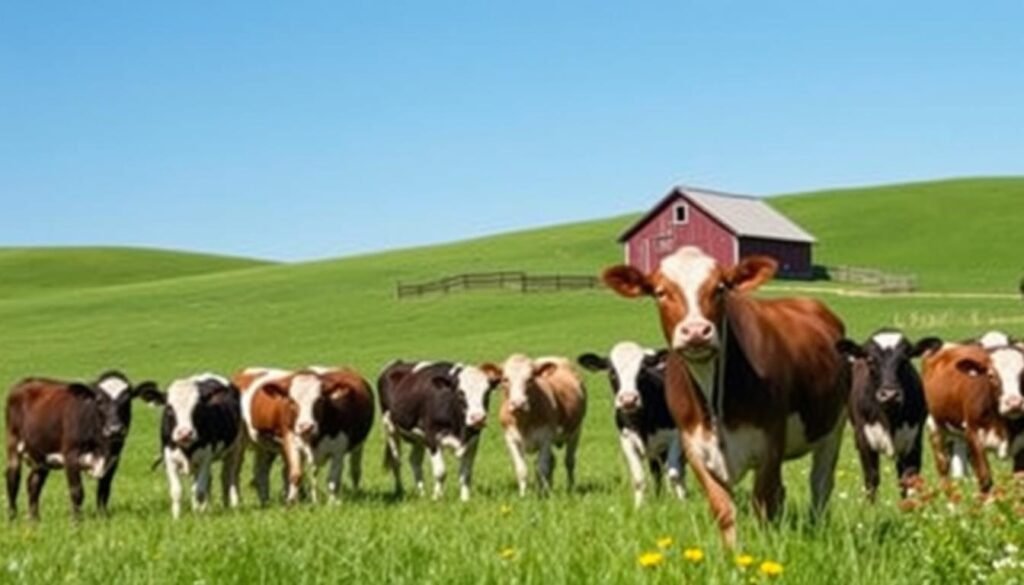
Carnivore Diet and Veal
Starting a carnivore diet can change your life for the better. It focuses on meat for health and nutrition. Veal, rich in protein, is key in this diet. This guide explores how veal fits into a meat-based diet.
Key Takeaways
- Learn about the carnivore diet and veal’s role in meeting your protein needs.
- Find out why veal is a great choice for its protein and nutrients.
- See how to add different veal cuts to your meat-only meals.
- Understand the ethics of veal farming and make smart choices.
- Compare veal with other proteins for cost, environmental impact, and health benefits.
- Get tips on adding veal to your carnivore diet meal plans.
- See how veal can be a big part of your meat-focused lifestyle.
Understanding the Basics of Carnivore Diet and Veal
The carnivore diet has become popular in recent years. It focuses on eating meat, poultry, and animal products. Veal is a key protein in this diet.
What Defines a Carnivore Diet
A carnivore diet mainly includes meat-based foods like beef, lamb, and fish. It aims to eat whole, unprocessed animal proteins. This diet is inspired by our ancestors who ate animal-based foods.
The Role of Veal in Animal-Based Nutrition
Veal is a tender meat from young calves. It’s rich in protein and essential amino acids. Adding veal to a meat-based diet can improve nutritional balance and health.
Historical Context of Meat-Only Diets
Meat-only diets have been around for a long time. Ancient cultures and modern advocates have followed this diet. This history shows the value of veal in a meat-based diet.
| Nutrient | Veal | Beef | Chicken |
|---|---|---|---|
| Protein (g/100g) | 21.5 | 26.4 | 23.5 |
| Fat (g/100g) | 3.1 | 14.3 | 5.6 |
| Iron (mg/100g) | 1.5 | 2.3 | 0.9 |
| Zinc (mg/100g) | 3.1 | 4.8 | 0.9 |
Nutritional Profile of Veal in a Meat-Based Diet
Veal is a top choice for those following a carnivore diet. It’s tender and packed with high-quality protein and essential vitamins and minerals. This makes it a great option for a meat-centric lifestyle.
Veal is known for its high protein content. It has lots of amino acids, which are important for muscle growth and repair. Plus, its protein is easily absorbed by the body.
Veal is also rich in nutrients like vitamin B12 and iron. Vitamin B12 helps with energy and nerve function. Iron is key for carrying oxygen in the blood and keeping the immune system strong.
| Nutrient | Amount per 100g of Veal |
|---|---|
| Protein | 26g |
| Vitamin B12 | 2.4μg |
| Iron | 1.9mg |
| Zinc | 3.6mg |
Veal fits perfectly into a carnivore diet. It’s a great choice for anyone looking to boost their nutrient intake. Enjoying veal can help you meet your body’s needs while savoring its delicious taste.
Benefits of Including Veal in Your Carnivore Lifestyle
Veal is a great choice for those on a carnivore diet. It’s a high-quality animal protein that boosts your health and well-being.
Protein Quality and Amino Acid Profile
Veal is known for its top-notch protein and amino acids. It helps grow, repair, and maintain muscles. This nutrient-dense food has all the amino acids you need, making it perfect for a meat-based diet.
Micronutrient Advantages
Veal is also packed with important nutrients like iron, zinc, and vitamin B12. These animal protein sources are key for energy, immune health, and making red blood cells. Adding veal to your diet is a smart move.
Digestibility and Absorption
Veal is easy to digest and absorb, which is great for a carnivore diet. The veal protein is quickly broken down and used by your body. This means you get the most nutritional benefits without stomach issues.
“Incorporating veal into your carnivore diet can unlock a world of nutritional benefits, empowering you to thrive on a meat-based lifestyle.”
Sourcing High-Quality Veal: A Complete Guide
The quality of your protein is key in the carnivore diet. Veal, a versatile and nutrient-rich meat, is a great addition. It’s important to choose veal that is raised ethically and sustainably.
When looking for veal, consider the animal’s diet and living conditions. Choose grass-fed and ethically raised veal. This ensures the animal was treated well and lived in a natural environment. Grass-fed veal is not only healthier but also supports sustainable farming.
- Seek out veal from farms that prioritize animal welfare and use ethical meat consumption methods.
- Look for certifications such as Certified Humane, Animal Welfare Approved, or Pasture-Raised to ensure the veal meets high standards of sustainable farming practices.
- Consider purchasing veal directly from local, small-scale farms that are transparent about their grass-fed meat production methods.
By researching and choosing high-quality veal, you enjoy its nutritional benefits. You also support ethical and sustainable farming practices. These values align with the carnivore lifestyle.

“Choosing ethically sourced, grass-fed veal is not only better for the animal, but it also ensures you’re getting the most nutrient-dense and flavorful meat possible.”
Different Cuts of Veal and Their Best Uses
Veal is a unique and flavorful animal protein source. It offers a range of options for different culinary needs and budgets. Knowing the different cuts and how to use them is key.
Premium Cuts for Optimal Results
Premium cuts like the tenderloin, rib, and loin are the best for a fine veal experience. They are known for their tenderness, juiciness, and flavor. These cuts are perfect for special occasions or when you want to enjoy a luxurious meal.
Budget-Friendly Options
For those on a budget, consider cuts like the shoulder, leg, and shank. These cuts may need more preparation but can be made into delicious meals. They’re great for everyday meals or when you want to save money while enjoying veal.
Preparation Methods
Proper preparation is essential for veal. Grilling, roasting, and braising are excellent methods. They bring out the veal’s natural flavors and tender texture. Try different seasonings and cooking techniques to find your favorite ways to prepare veal.
| Veal Cut | Best Uses | Preparation Tips |
|---|---|---|
| Tenderloin | Fine dining, special occasions | Grill, roast, or pan-sear for optimal tenderness |
| Shoulder | Stews, braises, ground veal | Slow cook to tenderize and develop rich flavors |
| Rib | Roasting, grilling, chops | Season generously and cook to desired doneness |
| Leg | Roasting, schnitzels, cutlets | Pound thin for quick cooking or roast for a juicy, tender texture |
Understanding veal cuts and their uses helps you add this exceptional animal protein source to your meat-based diet. You can create satisfying and nourishing meals.
Ethical Considerations in Veal Production
We all must think about the ethics of what we eat, especially when it’s animal-based like veal. Today’s farming has changed to care more about animal welfare. This means we can enjoy veal’s health benefits while staying true to our values.
Veal used to be raised in tiny crates, which was bad for the calves. But now, many farms are changing. They let calves move around and act naturally, like grazing and playing with others.
- More farms are raising veal in a way that’s good for the animals, like on pasture. This is becoming easier for us to find.
- Good veal farms follow strict rules. They make sure calves are treated kindly, eat well, and have room to be themselves.
- By choosing ethical veal, we help make the food system better. We get to enjoy veal’s health perks while doing the right thing.
| Ethical Consideration | Traditional Veal Production | Modern Ethical Veal Production |
|---|---|---|
| Calf Confinement | Calves confined in small crates, limiting movement | Calves able to roam freely and engage in natural behaviors |
| Nutritional Diet | Restricted diet, often lacking in key nutrients | Calves fed a balanced, nutritious diet to promote health and growth |
| Animal Welfare | Limited attention to the calves’ physical and emotional well-being | Strict guidelines and practices that prioritize the calves’ comfort and care |
By choosing wisely, we can enjoy veal’s health benefits. We also help make the food system better and kinder.

Comparing Veal to Other Protein Sources
Veal is a top choice for those on a carnivore diet. It’s worth looking into how it stacks up against other animal proteins. We’ll compare nutritional values, cost, and environmental impact.
Nutritional Differences
Veal is packed with nutrients and has a special amino acid mix. It has less fat and calories than beef but still offers plenty of protein. It’s also rich in vitamins B12, iron, and zinc.
This makes veal a great pick for those wanting lean, nutritious animal protein.
Cost Analysis
The price of veal can change based on quality, cut, and where you buy it. While top-quality veal might cost more, there are affordable options too. Considering its nutritional value and versatility, veal can be a smart choice for a carnivore diet.
Environmental Impact
Many care about sustainable farming. Veal farming, when done right, can be better for the environment than some other livestock. New methods in veal farming, like less confinement and more pasture, help make it more eco-friendly.
Knowing about veal’s benefits can help carnivore diet followers make better choices. Adding high-quality veal to your diet can be rewarding and healthy.
Meal Planning with Veal on the Carnivore Diet
Adding veal to your carnivore diet can be a tasty and healthy choice. Veal is packed with high-quality protein and has a strong flavor. It fits well with the meat-focused carnivore lifestyle. Veal is great for changing up your protein or trying new recipes.
Veal is rich in amino acids like leucine and lysine. These are key for muscle growth and repair. Combining veal with other animal proteins like beef or lamb makes for a fulfilling meal. It’s perfect for an active carnivore lifestyle.
Veal can be cooked in many ways, like grilling or braising. Try different methods to bring out veal’s unique tastes and textures. Serve it with healthy fats like grass-fed butter or avocado oil. This boosts the meal’s nutrition and keeps your diet balanced.
FAQ
What is a carnivore diet and how does it relate to veal?
A carnivore diet focuses on animal foods like meat, poultry, fish, and dairy. Veal, from young calves, is a great protein source for this diet.
What are the key benefits of including veal in a carnivore diet?
Veal is rich in protein, iron, B vitamins, and minerals. It supports muscle growth and keeps blood healthy. It’s a key part of a balanced carnivore diet.
How does the nutritional profile of veal compare to other animal proteins?
Veal has high-quality protein and a good amino acid mix. It also has more vitamin B12 and zinc than other red meats. This makes it a top choice for those on a carnivore diet.
What factors should I consider when sourcing high-quality veal for my carnivore diet?
Choose veal from farms that care about animal welfare. Look for humane slaughter and no hormones or antibiotics. Grass-fed and organic veal are great options.
How can I incorporate veal into my carnivore diet meal planning?
Veal is versatile in a carnivore diet. Try it grilled, in stews, or sautéed. Experiment with different cuts and cooking methods to find your favorites.
In the Spotlight

Carnivore Cure is the first elimination protocol to explain how to adopt a meat-based diet to bring about healing.
READ MORE
